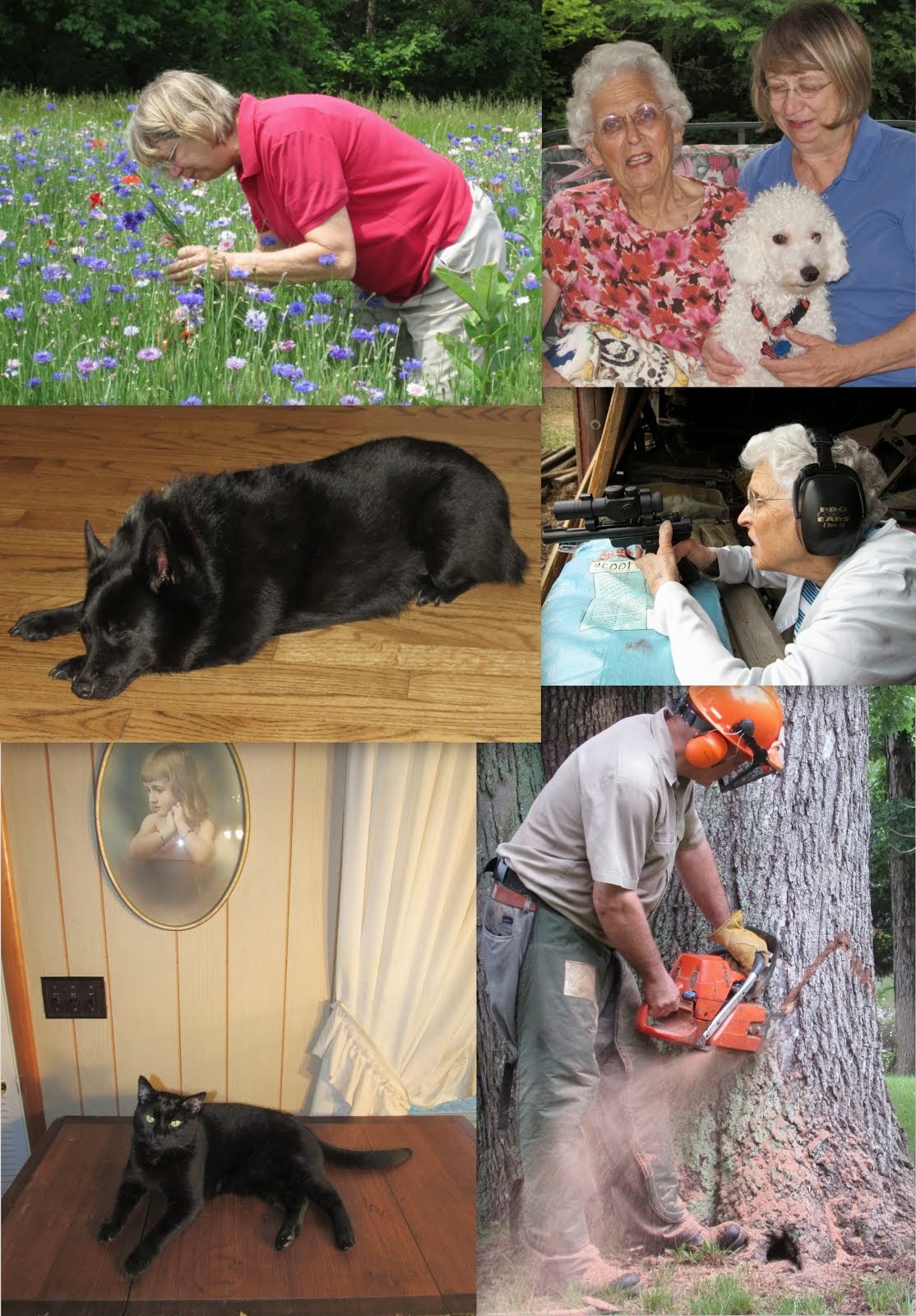 This red maple resides only thirty feet from a house, and it presents a serious risk to the homeowner. Early in its life it forked, probably because of storm damage, or improper pruning. The forks are "Bad Branch Angles," a safety defect in any tree, because steep branch angles are easily torn off in storms. The fork closest to the camera is at least a strong joint, but the one in back has included bark, which makes the fork even more likely to fail. Included bark means that the two sides of the fork are pushing each other apart as the tree grows, and failure is inevitable. Strong joints have a ridge between the stem and the branch. Joints with included bark do not have the ridge.
This red maple resides only thirty feet from a house, and it presents a serious risk to the homeowner. Early in its life it forked, probably because of storm damage, or improper pruning. The forks are "Bad Branch Angles," a safety defect in any tree, because steep branch angles are easily torn off in storms. The fork closest to the camera is at least a strong joint, but the one in back has included bark, which makes the fork even more likely to fail. Included bark means that the two sides of the fork are pushing each other apart as the tree grows, and failure is inevitable. Strong joints have a ridge between the stem and the branch. Joints with included bark do not have the ridge.Looking up in this tree, we see two more problems. Old topping wounds are sending rot down the branches, which are reaching over the house. The branch nearest the lens has a split running for several feet, so this branch is failing already, and is likely to come down in any blustery weather.
 Soft maples are popular as shade trees because they produce shade in a hurry, but numerous problems come with that speed. The wood is weak, it rots easily if the tree is wounded, and the roots tend to run on top of the ground, making the tree very susceptible to root rot due to wounding from lawnmowers. Homeowners regularly top these trees to control the height, and that introduces rot, and bad forks. My advice to people wanting to plant new trees in their yard is to keep soft maples at least 100 feet away from the house. They will grow to 90 feet tall, and you have a little safety margin. If they are planted any closer to your house, someone is eventually going to have a very expensive removal problem.
Soft maples are popular as shade trees because they produce shade in a hurry, but numerous problems come with that speed. The wood is weak, it rots easily if the tree is wounded, and the roots tend to run on top of the ground, making the tree very susceptible to root rot due to wounding from lawnmowers. Homeowners regularly top these trees to control the height, and that introduces rot, and bad forks. My advice to people wanting to plant new trees in their yard is to keep soft maples at least 100 feet away from the house. They will grow to 90 feet tall, and you have a little safety margin. If they are planted any closer to your house, someone is eventually going to have a very expensive removal problem.






No comments:
Post a Comment